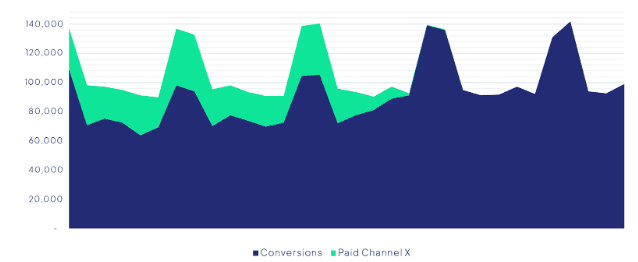Platform
Use Cases
Many Possibilities. One Platform.
AI and Automation
The Always-on Incrementality Platform
Solutions
Teams
Built for your whole team.
Industries
Trusted by all verticals.
Mediums
Measure any type of ad spend
Use Cases
Many Possibilities. One Platform.
AI and Automation
The Always-on Incrementality Platform
Teams
Built for your whole team.
Industries
Trusted by all verticals.
Mediums
Measure any type of ad spend

This article is a thought leadership piece written by INCRMNTAL’s CEO Maor Sadra.
I have been vocal and opinionated about several issues in our industry in the past. In my previous roles, I’ve written much about flaws in attribution, the fantasy which is multi-touch attribution, fingerprinting, geolift experiments, and most recently about MMM.
But many of the issues I’ve written about tend to scratch a problem that is significantly more severe than all other technical challenges combined.
Everybody knows this problem, but no one really wants to talk about it.
I’m talking about the incentives problem, and how bad incentives lead to bad marketing.
User based attribution as a form of measurement has many advantages in its corner, but one major disadvantage it carries, is the fact that it cannot and does not measure incrementality.
We wrote much about this in a recent white paper: Measurement Orchestration.
The chart below features a fictional attribution report showing total conversions, and the conversions attributed to Paid Channel X over the course of a month.
During the month, this channel was paused, but as seen in the chart below, pausing this channel had no impact over total conversions.

What one could conclude from such a report, is that Paid Channel X had no value over conversions as once stopped, the total number of conversions had not changed. Another conclusion would be that the ad spend across Paid Channel X was a waste.
How would you react if you saw such an example in your own reporting?
Many companies use quantitative targets and goals to align the interests of the company and its employees.
Over the past decade, companies relied and built their entire marketing infrastructure on the foundation of click based attribution.
One of the most common goals for marketers has been generating results from paid marketing activities, using the same infrastructure.
And here comes the problem.
You would think that a company would be happy to learn that they saved wasted ad spend by cutting channels that do not yield incremental results.
However, if a marketer is incentivized to generate results based on a measurement methodology that does not measure incrementality, you can quickly understand why there could be a conflict of interest between the Company and the Marketer.

In recent years, UBER sued their advertising agency, and later UBER sued and won a case against around 100 ad networks for generating results which were attributed, however, redundant. UBER’s grounds for this lawsuit claimed Fraud, but those who understand the mechanics of attribution, can also claim that much of the blame could have been laid against the incentives of the agency, the networks, and UBER’s own marketing teams at the time.
UBER was neither the first, nor the last company that will learn the hard way that aligning marketers incentives to user attributed results is a recipe for disaster.
AirBNB, who paused most of their marketing activities during the COVID-19 pandemic, also found the same.
Brian Chesky, AirBNB’s CEO, said this:
“What the pandemic showed is we can take marketing down to zero and still have 95% of the same traffic as the year before. So we’re not going to forget that lesson.”
(Read the full article on campaignlive.co.uk)
Marketing is a critical function in every company, and often, marketing spends will represent the most significant amount in companies’ budgets, often exceeding every other cost item a company accounts for.
Incrementality is the holy grail of marketing results, representing a true measurement of value.

However, not all companies measure incrementality. More than often, companies may discover that their ad spends are not incremental by accident.
Incrementality is not the only way to set goals and come up with incentive schemes. Wise companies will incentivize marketers based on the blended performance of all marketing activities. Total ROAS (Total Revenues / Total Ad Spend) , or based on growing MAU metrics, aligns marketers to the bigger picture, rather than the skewed view that often is provided by user based attribution.
We would love to hear how your company set incentives using this short survey. We would use the results (anonymously) in a follow up article.